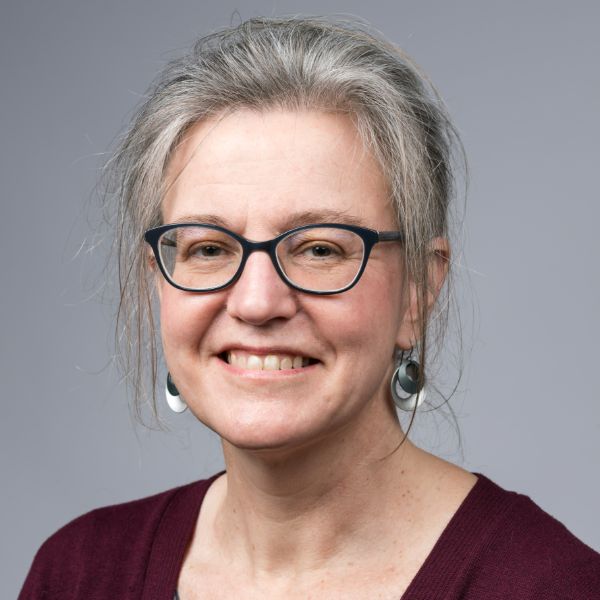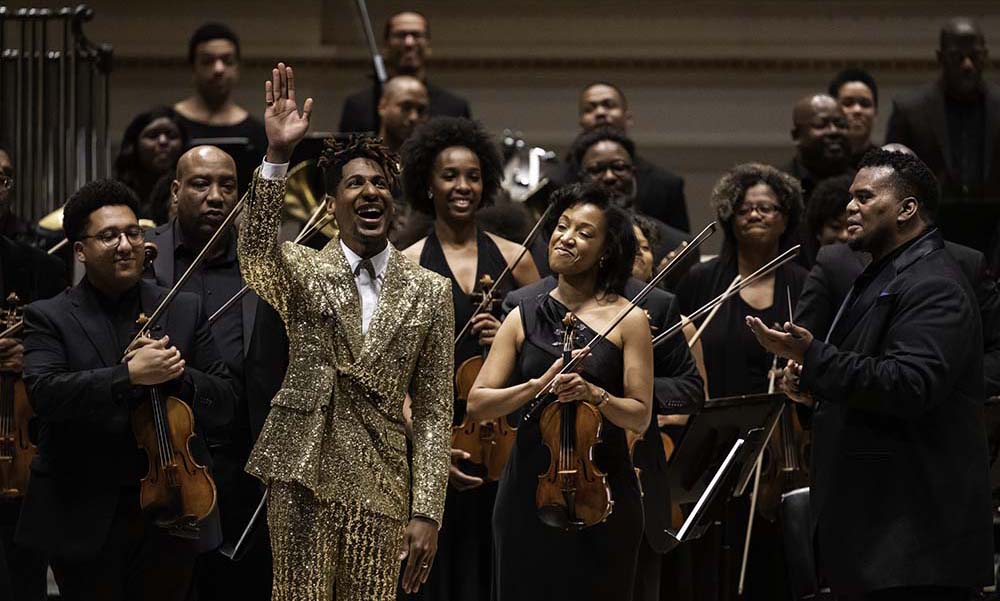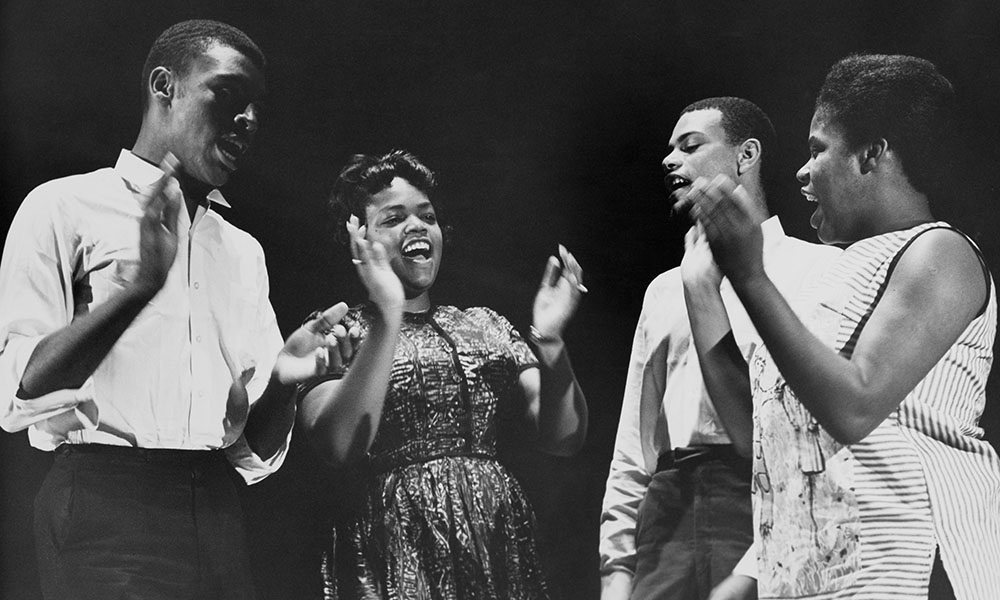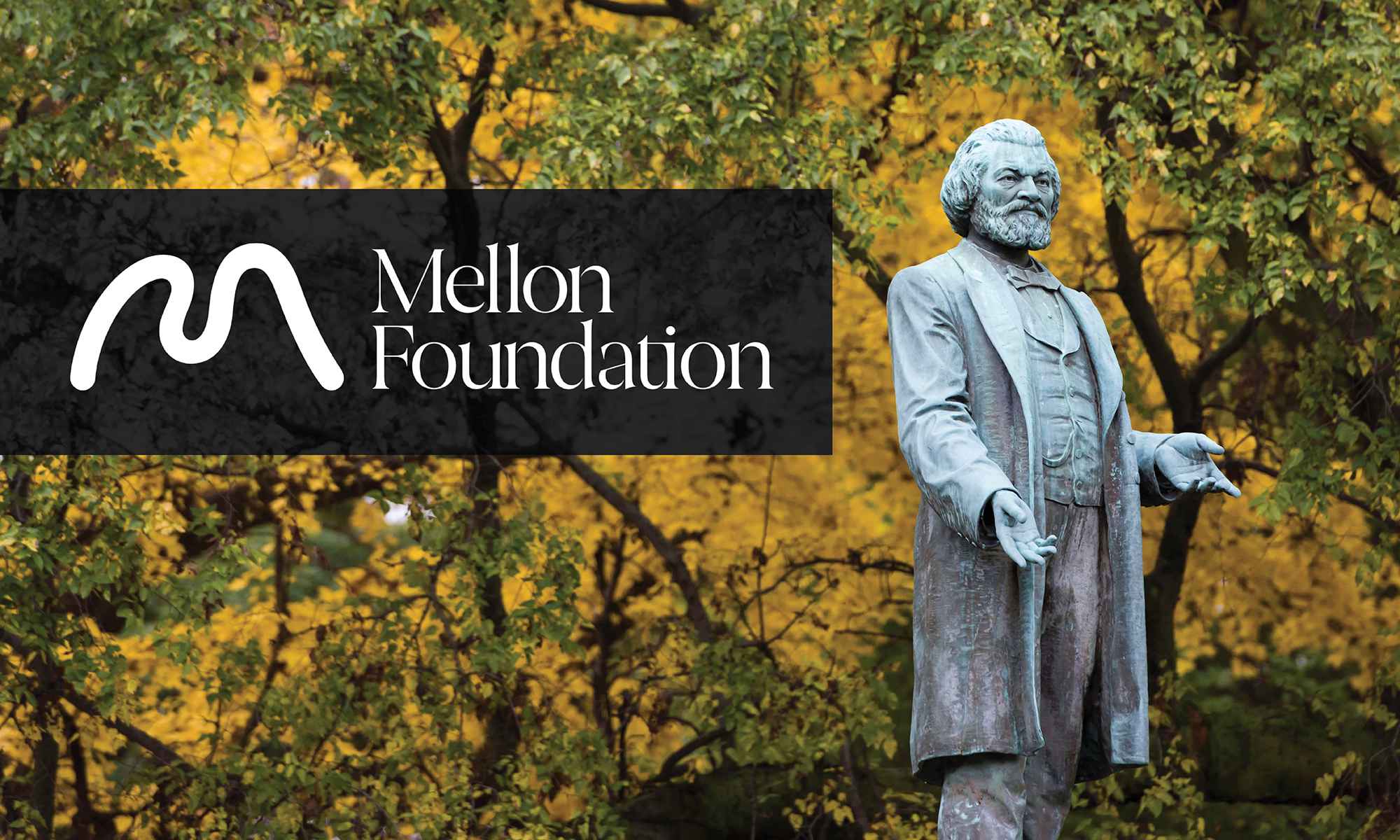Crystal Sellers Battle articulates a path toward long-term cultural change at the Eastman School of Music.
Crystal Sellers Battle began her musical journey in church, singing gospel as a youth with her father and siblings. But when she entered college to study voice, “I went into my very first voice lesson and was told by my teacher that I had to choose between singing gospel music or singing classical music,” she says.
Classical vocal training has been honed over centuries to protect the health and viability of the vocal cords. Thus, the teacher reasoned, gospel singing could limit Sellers Battle’s prospects for a long and successful career—as a classical singer. Later, as a doctoral student at Ohio State, Sellers Battle found a mentor who supported her aspirations, and she was able to make a major contribution toward advancing the study of gospel music through her dissertation, I Sing Because I’m Free: Developing a Systematic Vocal Pedagogy for the Modern Gospel Singer.
But Sellers Battle, who started in July 2022 as the inaugural associate dean of equity and inclusion at the University of Rochester’s Eastman School of Music, also knew that something unspoken was at play in the efforts of teachers to steer her away from gospel.
The world of music—a practice and an art form believed to be universal among cultures and societies and with ancient roots—is vast. Yet the doorway into schools of music in the United States has been narrow. Despite the rich musical traditions indigenous to this country—Mississippi Delta blues, bluegrass and Appalachian folk, the musics of Native Americans, jazz—university-level American schools of music proliferated around the turn of the last century to teach and disseminate Western classical music. And to do so was considered a means of cultural elevation.
That historical legacy places a unique burden on schools of music, including Eastman, striving to cultivate a more inclusive learning environment. Although Eastman and its elite peers have long since begun to diversify faculty and curricula, the remnants of that exclusionary past remain entrenched.
In June 2020—deep into the COVID-19 pandemic and in the cataclysmic aftermath of the killing of George Floyd, an unarmed Black man, by Minneapolis police officers—Jamal Rossi, the Joan and Martin Messinger Dean of the Eastman School, announced the formation of the Eastman Action Commission for Racial Justice. The mission of the 20-person group composed of students, faculty, staff, and alumni was to recommend “actionable, achievable, measurable, and sustainable” steps to accelerate the school’s work toward achieving a more diverse, equitable, and inclusive community. Working on a tight timeframe, the commission conducted surveys of alumni, students, and faculty, and released a 175-page report the following fall.
The opening lines of the report, which Rossi called “powerful and comprehensive,” read: “The Commission asserts that diversity, equity and inclusion at Eastman have failed to reach the level of highest priority at the School, noting that there has been little change in this regard since 1921.”
There has been only one full-time Black faculty member in the history of the school’s jazz program, for example, and only for a period of two years, in the 1990s. Meanwhile, “many Black alumni, while acknowledging the excellent education they received, cite harrowing and tragic experiences while students at the School,” the commission noted.
The position Sellers Battle now occupies, as well as the George Walker Center for Equity and Inclusion in Music, which she directs, are outgrowths of the commission’s work.
Q&A with Crystal Sellers Battle
About Crystal Sellers Battle
Associate dean of equity and inclusion
Professor of music leadership
Director, George Walker Center for Equity and Inclusion in Music
Born and raised in Columbus, Ohio, Crystal Sellers Battle earned a bachelor of music degree from Bowling Green State University; a master of music from Chicago College of Performing Arts at Roosevelt University; a postgraduate diploma from Royal Northern College of Music in Manchester, UK; and a doctor of musical arts in vocal performance, with a specialization in singing health, from The Ohio State University.
Before coming to the University of Rochester’s Eastman School of Music in July 2022, Sellers Battle served as the dean of equity, diversity, and inclusion and chief diversity officer at Juniata College in Huntingdon, Pennsylvania. From 2009 to 2021, she was a professor of voice at Bluffton University, serving as chair of the music department from 2017 until her departure. She is also the cofounder of DIEMA (Diversity, Inclusion, and Equity in Musical Arts) Consulting Group, LLC.
The phrase “diversity, equity, and inclusion” has become pretty ubiquitous in recent years in higher education and in workplaces generally. What do each of these words mean to you?
Sellers Battle: Diversity comes from our mere existence. We all came from different places. We were raised differently. We have different sexual preferences and identities. We have different socioeconomic statuses and backgrounds. We all have different stories related to our upbringing.
I don’t actually like to use the word diversity, because it’s not something we need to work toward. What we do need to work toward is equity and inclusion.
Equity is about everyone having the necessary resources for a successful outcome. I use this example: all full-ride scholarships are not created equal. A student who gets a full ride who came here from a low-income household has a very different experience than someone on a full ride whose parents are doctors. When it comes time to buy a tuxedo or a concert dress, the needs of those two students might not be the same. And to provide additional resources for one, in this case, does not take away from the other.
And I say that inclusion is about the eradication of compartments. For example, I have several identities and not just one. I’m Black, I’m female, I’m a mom, I’m married, I’m straight, I was born Christian, I grew up in a two-parent household, and I was a first-generation college student. You probably have several identities yourself. And what we’ve tended to do is to decide that because someone has a different identity than ours—in any single dimension—we’re going to put them in a compartment over somewhere in the corner. An inclusive environment is one where we’re all in the same container but there are no walls.
Based on your own experiences and knowledge of the history of American music schools, you’ve pointed out that music schools have some unique challenges in fostering inclusion. What are those?
Sellers Battle: What is really challenging in the very nature of the study of music and a higher education process is that it was built on the idea that one form of music, and one which makes up a very small portion of the world’s musics, is superior to any other. Based on that assumption, schools adopted one set of rules, and those were considered the only set of rules.
The assumption of Western classical music’s superiority is very deeply rooted, and it’s interesting how that came to be. Initially most of what is thought of as classical music was created either for church services or for social gatherings in people’s homes. Art song was written to be sung in people’s homes in liederabend—nights where people gathered to sing together. So there were popular and practical reasons for the creation of this music.
But then there became the study of it, coinciding with the rise of the modern research university. And with the study of the music came the theorizing about it. And that theorizing turns what might have once been a popular art form into a high-level art form. I would say that you could probably have theorized West African music, too. It’s just that it wasn’t done.
I think we, meaning music schools in general, have made progress in accepting everyone’s various identities as a person. But then we get to the study of music and eliminate their identities as musicians. For a lot of us, especially those of us who are African American, our entrée into music was not through the classical arena.
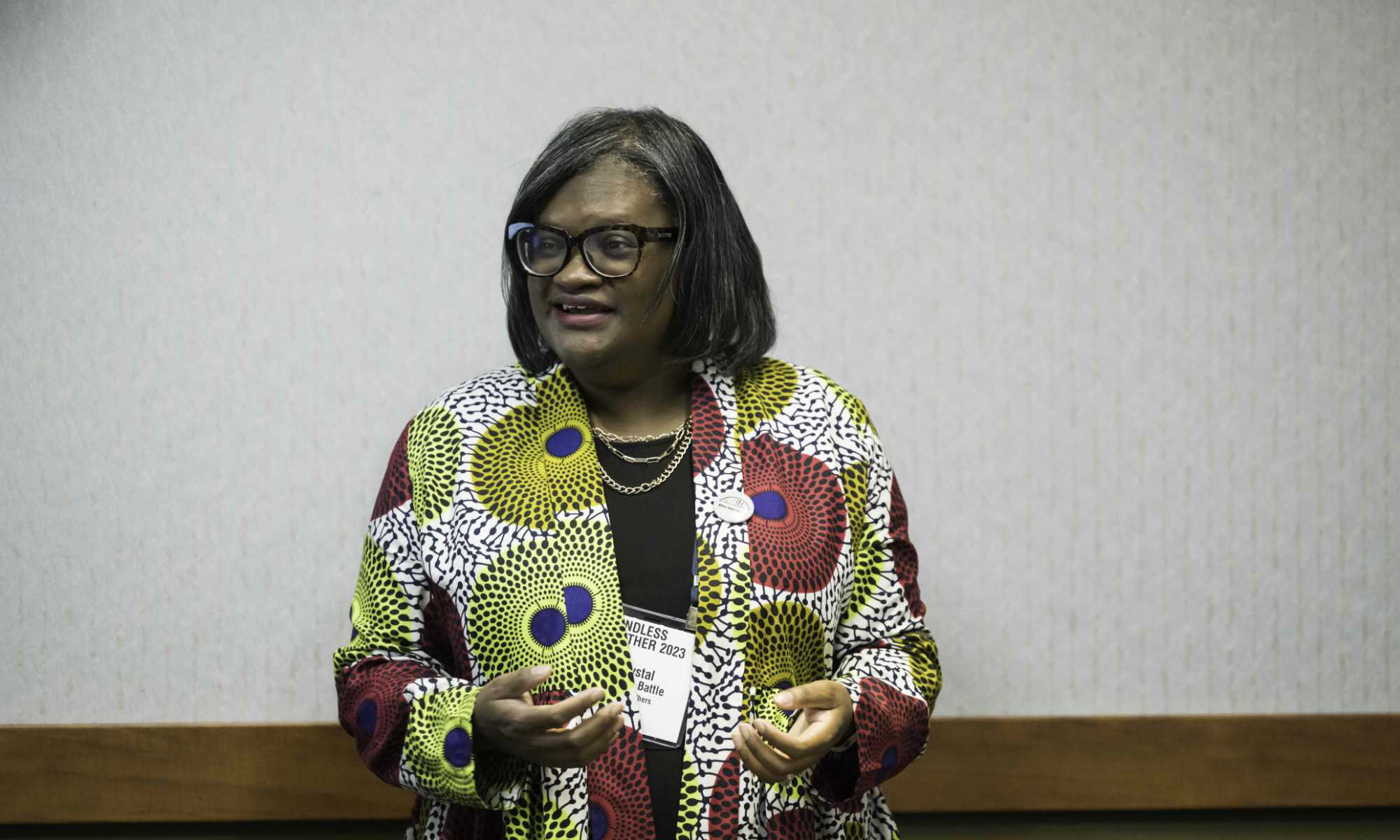
What are your top priorities as Eastman’s first designated leader for equity and inclusion?
Sellers Battle: Priority one is identifying what equity and inclusion mean for this institution. The definitions I offered are my general definitions, but the definitions are different for every institution based on priorities and historical contexts.
Priority number two is to make the George Walker Center into a space for students. There’s a belief here that “eat, sleep, music” is how you operate—and students tend to skip the sleep part. I have a rule: we’re not going to practice in this space; we’re going to use it to unwind and rejuvenate. It’s also going to address the needs of affinity groups. So there may be nights when we’re really focused on LGBTQ+ energies, or when our Black Students Union is reserving the space for an affinity moment. But I’m also trying to convey that the George Walker Center is a space for all. And in being a space for all, it’s going to bring some people together who wouldn’t necessarily have been together otherwise.
My third priority is to engage in conversations with faculty, staff, and students to help me see where faculty, staff, and students see themselves in this process. I want to make sure that we’re all engaged in thinking about what the process for change looks like.
Have you set longer-term goals?
Sellers Battle: I have a few ideas based on the commission report and other observations. We’re probably going to be looking at curricular restructuring but doing it in small segments rather than as a major overhaul. You cannot do an about-face without proper planning and time, or people are going to get hurt.
Leading a cultural shift seems like an extraordinarily complicated and challenging job. What are your thoughts on how to go about it?
Sellers Battle: Sometimes it’s really difficult to abandon tradition. A lot of people also think that the only way to enter into conversations about equity and inclusion is through the topic of race. It’s not. Let’s go back to my description of an inclusive space as a single container without walls. Sometimes I also use the analogy of a cruise ship. We’re all on the same ship, but there are many entryways.
My belief is that if you are not comfortable coming into this conversation through the door of race, then let’s have you enter through another door, which may be about age, or another which may be about religion, or gender, or a particular interest—whatever it is that’s going to get you into the space. Then we can begin the conversation.
Equity and inclusion is about much more than race. Let’s talk about the challenges of socioeconomic status, or religious identity, and all of these other dimensions to our identities. And then people who are not comfortable entering through the door of race are going to find out that there are some similarities between the challenges they face that are based on a particular aspect of their identity and the challenges faced by people that stem from race.
We’re not going to be able to eradicate institutionalized racism, or any other kind of structural inequity, in a day. But we can till the soil to break some of it up. And that takes work. A lot of work. But that doesn’t mean that it’s impossible work.
Editor’s note: This story was originally published on October 5, 2022. It has been updated to feature the video titled Breaking Down the Barriers of Gospel Music.

